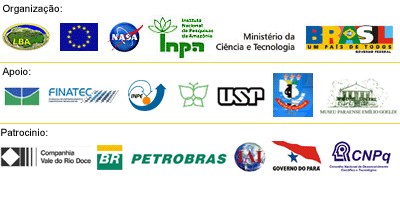
Specialists from around the world are going to Brasília to discuss one of the biggest scientific experiments in progress on the planet: LBA, headquartered in Amazonia
At the end of July, in Brasília, about 800 scientists and specialists coming from more than 70 research centers from Brazil (INPA, INPE, USP, FIOCRUZ, EMBRAPA, Museu Emílio Goeldi, Imazon, IBAMA, etc.), as well as another 100 international institutions from other Amazonian countries, from the United States, and from Europe, among them such presigious institutions as NASA, Harvard, Cornell, and the University of California (USA), the Max-Planck Institute (Germany), and Oxford University (UK), are reuniting to discuss the results of one of the largest scientific experiments presently in progress in the world, proposed and lead since 1998 by Brazil: the Large-scale Biosphere Atmosphere Experiment in Amazonia, or LBA.
International Success
LBA is considered the largest project of international scientific cooperation ever created in the environmental arena: it arose by way of internationa agreements and is financed by the principal Brazilian funding agencies (Fapesp, Embrapa, etc.), by NASA (the US space agency) and by the European Union.
Planned to end in 2006, LBA is an international scientific success, with 61 projects already over and 59 in progress. What's most important is that LBA deals with that which is informally called "cutting edge science", that is, research that is extremely up-to-date and of high quality. The efforts include more than 1,000 researchers from Brazilian institutions; foreign institutions from the countries of the Amazon Basin (Venezuela, Peru, Bolivia, Colombia, and Ecuador); and collaborations and exchanges with institutions from the United States and eight European countries. The program as a whole is characterized by its interdisciplinary nature.
Brazil, the great beneficiary
The principal goal of LBA is to study the interactions between the Amazon forest and the atmospheric and climatic conditions on a regional and global scale, that is, to explain how Amazonia functions as a regional biosphere; how land use changes affect to regional and global climate; and how the climate changes influence the biological, chemical, and physical functioning of the forest and its sustainability. To this end LBA is the object of an unheard of research effort and a great deal of equipment (such as the sensor towers, satellites and various instruments for collection and analysis of data on different scales of observation).
The Brazilian Ministry of Science and Technology (MCT) is responsible for managing the project, whereas INPA, the National Institute of Research in Amazonia, does the scientific coordination, which includes coordinating the work of 288 institutional partners. Despite the great international interest which LBA naturally awakens, indeed because alterations in the Amazon forest have the potential to modify the world climate, the greatest beneficiary of the strategic project is Brazil. At the end of LBA, in 2006, Amazonia will be able to count on at least 390 specialists with Masters or Doctoral degrees in the theme of biosphere-atmosphere interactions (never has a Brazilian scientific program educated so many specialists in the same are of study). LBA will have polished a respectable contingent of scientists (not only among young beginners but also among the leaders of research), improving the research of the region and infusing new understanding into the public policies of management of the forest.
Another important point is that the data of the project remain in Brazil, which has exercised miniscule control over LBA activities since the beginning (even to go into the field the foreign researchers are necessarily accompanied by Brazilian scientists). The analysis of these data, in turn, will bring still more new information about Amazonia. In summary, by means of LBA a process of growth and maturity of the Brazilian scientific community is occurring.
Importance of the Conference
Every two years the scientists involved in this experiment meet to discuss and divulge their results and discoveries. This will occur in Brasília, 27-29 July: the III Scientific Conference of LBA, which this year will have a great novelty. In fact, a few days before the Conference, on the 23rd and 24th of July, some of the best names of the project will hold a Special Session called "Scientific Understanding and the Formulation of Public Policies for Amazonia: the Experience of the LBA Program". This session is intended principally to discuss with strategic sectors (members of the Brazilian congress and other governmental decision makers, NGOs, civic organizations, etc.) how to incorporate the results of LBA in the formulation of public policies for the Amazon region, as well as to stimulate thought about the role of science in sustainable development in Amazonia.
Because of this, the debates, which will occur in Brasília, are of worldwide interest. Among the key themes of the Conference are some of the most polemic and worrying topics for the Brazilian and international scientific community, such as the role of diverse ecosystems of the Amazonian region in the determination of local and global climatic variations; the evolution of deforestation in the Brazilian Amazon; the consequences of the expansion of cattle ranching for the public policies of the region; the principal factors in determination of rainfall regimes, etc. Because the whole planet is touched by the effects on the Amazonian atmosphere and biosphere of landscape changes, soil usage, and fires, the whole world will be paying attention to the discussions at the III International Conference.
